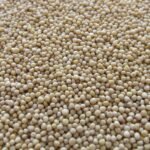There’s much more to celery than meets the eye. In this comprehensive guide, we’ll explore where it comes from, the various forms in which it can be eaten, and dive into its impressive nutritional benefits and values. If you’re a health enthusiast, this is a must-read!
From Humble Beginnings: The Origin of Celery
Believe it or not, celery has a rich history that goes beyond just being a staple in soups and salads. Originally hailing from the Mediterranean region and the Middle East, this unassuming vegetable has been cultivated for medicinal purposes for thousands of years. In fact, it’s even mentioned in Homer’s Odyssey as a plant called ‘selinon’. Nowadays, it’s grown worldwide, with China, India, and the US as leading producers.
However, it’s not just a journey through time we’re talking about. The transformation of celery from a bitter, wild marsh-dwelling plant to the crunchy, aromatic veggie we know today is nothing short of fascinating. Modern celery, as we know it, came into existence around the 17th century, thanks to selective breeding techniques employed by skilled gardeners.
Celery, in All Shapes and Forms
Celery is more versatile than you might think! It’s traditionally eaten raw as a crunchy snack or used as an aromatic in dishes. But it also comes in various other forms:
- Celery Juice: A popular health drink made by blending and straining celery.
- Celery Salt: A seasoned salt made from ground celery seeds or dried celery and salt.
- Celery Seed: Often used as a spice for cooking or in herbal medicine.
- Celery Powder: A dried, powdered form used as a flavor enhancer or food preservative.

Whichever form you choose, rest assured – celery brings a unique combination of crunch, taste, and nutrition to the table.
Nutritional Powerhouse: Unveiling Celery’s Benefits
Despite its modest appearance, celery is a bona fide nutritional superstar. Chock-full of essential vitamins, minerals, and beneficial plant compounds, celery offers a host of health benefits.
It’s hydrating, low-calorie, and packed with fiber, making it a weight-loss friendly food. Its high antioxidant content can combat inflammation, potentially reducing the risk of heart disease, cancer, and more. Furthermore, studies suggest that certain compounds in celery may have antimicrobial properties, and its seeds have been used in traditional medicine for centuries to treat various ailments.
Celery Nutritional Values
Below is the nutritional profile for one cup of chopped, raw celery:
| Nutrient | Amount |
|---|---|
| Calories | 16 |
| Protein | 0.7g |
| Carbs | 3.5g |
| Fiber | 1.6g |
| Sugar | 1.8g |
| Vitamin K | 30% of the DV |
*DV = Daily Value
FAQs
1. Can I eat too much celery?
While it’s generally safe to eat celery, overconsumption might lead to malnutrition, as celery alone does not provide all the necessary nutrients for a balanced diet.
2. Is celery good for digestion?
Yes, celery’s high fiber content can aid digestion and promote bowel regularity.
3. Are celery seeds edible?
Absolutely! Celery seeds are edible and often used as a spice or in herbal medicine.
A Wrap-Up on Celery
In a nutshell, celery’s nutritional profile and versatile uses make it a top-notch addition to your diet. Its unassuming exterior hides a wealth of health benefits, from antioxidants to digestive support. Whether it’s raw, juiced, or powdered, you can’t go wrong with celery!
So, the next time you’re at the grocery store, remember to toss a bunch of celery into your shopping cart. Your body will thank you for it!
Fun Facts:
- The word ‘celery’ comes from the French ‘céleri’, derived from an ancient Greek word ‘selinon’.
- Celery was first used as a medicine, not a food.
- Celery is a member of the Apiaceae family, which also includes carrots and parsley.
Source:
[1] Wikipedia.org/celery
[2] Medicalnewstoday.com




